There is more to Deepavali than lamps and crackers, it is also a time to binge on a delicious platter of sweets and savouries. The spread is varied for each community. MetroPlus looks at what is on the Deepavali plate of various communities that have made Kerala their home.
Big breakfast
“Deepavali is about an elaborate oil bath, sumptuous breakfast and fireworks,” says K Gomathy Ammal, Thiruvananthapuram-based writer and member of the Tamil Brahmin community. Ukkarai/okkarai, a sweet dish made with split Bengal gram, jaggery, coconut and ghee, and Inji lehyam, a medicinal mix, are must-haves for Deepavali. The lehyam is consumed soon after the customary oil bath. “Idli and chutney is had with with any type of vada. Sometimes we prepare vellayappam, a deep-fried snack made with rice, fenugreek, urad dal, ginger, green chilli, curry leaves and mustard. Wheat halwa is also made,” Gomathy adds.
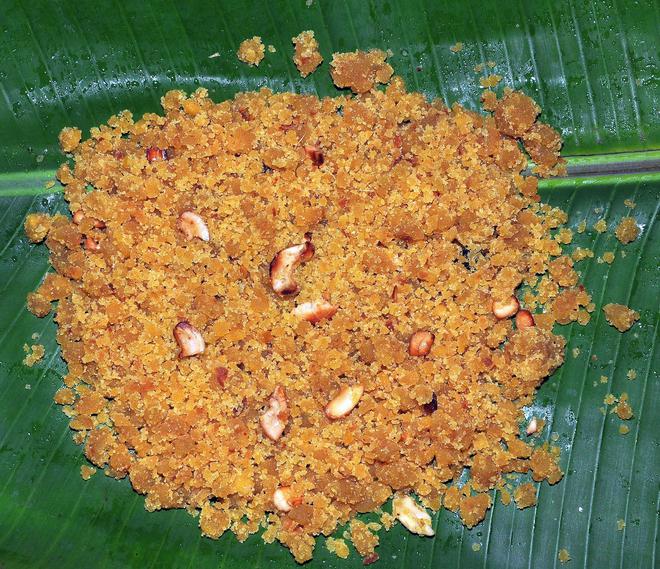
Every Deepavali, Jyothi Venkitasubramanian, from Mattancherry in Kochi makes ukkarai, a family favourite. The sweet is a bit labour intensive, “but once you get the mixture right, it is delicious,” says Jyothi. In terms of savoury, it is always the ribbon pakkavada that scores. “Almost all Tamil households make the ribbon pakkavada for Deepavali, and mixture too,” she adds. “Now-a-days, people don’t eat too many sweets for health reasons, but one sweet and one savoury would definitely be part of the Deepavali special menu,” she adds.
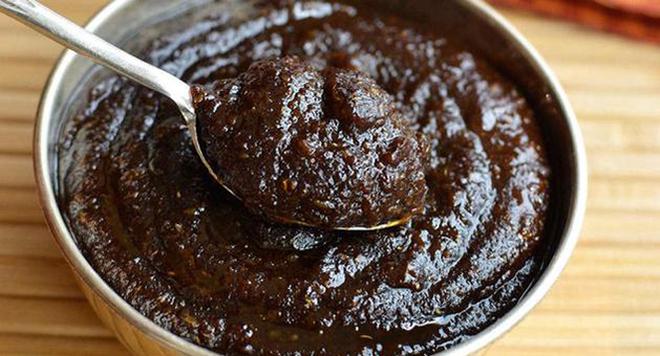
However, ukkarai and inji lehyam are not prepared in the Tamil households in Palakkad, says Vidhya Shanker who stays at Kalpathy in the district. “Idli-chutney-sambar combo is common for breakfast, along with homemade snacks and sweets. There will be ribbon pakkavada, thenkuzhal, muthusaram (crunchy snack made with rice and dal), omappodi, and sweets such as Mysore pak, ladoo, rava ladoo, wheat halwa etc.
Muthusankari Manikandan, who belongs to the Tamil-speaking Reddiar community in Thiruvananthapuram, says, “Kaimurukku and athirasam are a must for Deepavali. In addition, we make wheat halwa, thattai, thenkuzhal murukku, uzhunnuvada, pakkavada, ring murukku, cheeda etc.”
For the goddess
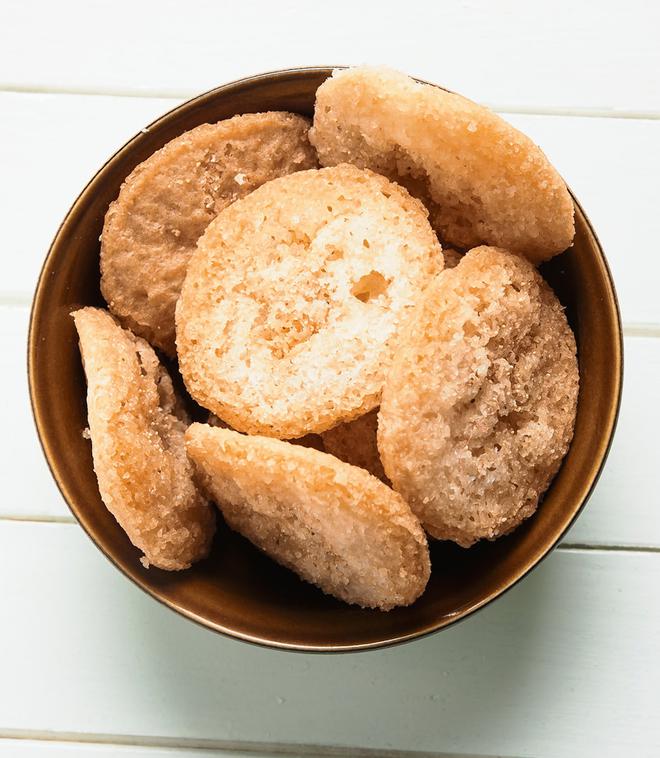
Deepavali celebrations extends over five days for Maharashtrians. “We perform Lakshmi puja on Deepavali day and whatever we prepare is offered to the deity. My mother used to say that the goddess likes sweets made of besan (gram flour) and rice,” says Smriti Pandey, a resident of Thiruvananthapuram who hails from Maharashtra. So there will be besan ladoo, karanji (deep-fried dumplings with sweet coconut filling), anarsa (sweet rice flour pastry), shankarpale (deep-fried snack made from rice flour), and savouries such as chiwda (crispy snack mix) and chakli (a variety of murukku). Puri, aloo sabji, kheer, pooran poli, bhajiya... etc are also prepared. “We don’t use onion or garlic in any of the main course dishes,” she says.
Lai batasha, which is puffed rice and sugar candy in circular shape, is another Deepavali special. “Since my husband is from Uttarakhand, I also make singhal Kumaoni, a Deepavali special from his place. It looks like jalebi and the ingredients are rice flour/semolina, banana, milk, curd, ghee and sugar,” she says.
Sweet and spicy
Observed as Kali Puja in Bengal, Deepavali is more like a continuation of Durga Puja festivities, says Mahamaya Chattopadhayay, a senior member of Trivandrum Bengalee Association. “if you were to drop in at at a Bengali household during this time, you will definitely be served sweets, usually coconut ladoo and rice payasam. Rasagulla, rasmalai and pantua (gulab jamun) are also prepared for the festival,” she says. A non-vegetarian dish, preferably made of mutton, is a must, for most of the Bengalis. “Mutton kosha (slow-cooked dish) is what many prepare,” says Mahamaya.
Tradition lives on
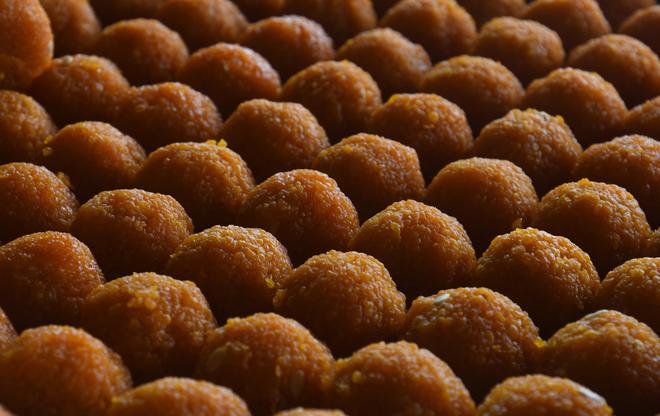
Ghughra, a deep fried pastry commonly filled with dried fruits, is a Deepavali special made in Gujarati households. The mildly-sweet snack, which is made using coconut powder filling, is just one among the many delicacies prepared during the festival. The Gujarati community in Kozhikode, which is believed to have settled in the city over 400 years ago, still preserves its culinary legacy. From the ghee-fried savoury khajali to papad puri, mathya and boondi ladoos and gud papadi, the members of the community make the festive specials at home. “Preparations start a week before Deepavali and we have a practice of gifting sweets and savouries to friends and relatives. It is one way to keep tradition alive and keep our cultural heritage intact,” says Kailash Vora, a textile agent, and secretary of The Gujarati Samaj, Kozhikode. The Samaj holds traditional sweet- and savoury-making contests as part of its Deepavali celebrations in order to keep the culture alive.
The city has only about 275 families today, he says. “The earliest settlers were tradespeople who came to the shores of Kozhikode to do business in timber and spices,” adds Kailash.
Celebration and remembrance
The day is about the sweet and the savoury for the Marwari community in Kochi. Moong dal (green gram) halwa and kanji vada are two must-haves on the Deepavali menu. “It is invariably one of the two, but made of moong dal — either as halwa or burfi. It is a specialty dish that is prepared as celebratory food. Gujiya [a version of the Maharashtrian karanji] is also made,” says Vandana Agarwal, who has been living in Kochi for 25 years. Kanji vada, which could be round or flat fried cakes, is made of either green gram or split black lentils and it is soaked in water infused with a paste of mustard seeds, fennel, salt and turmeric. Most sweets and savouries are now store bought since it is all easily available, she adds.
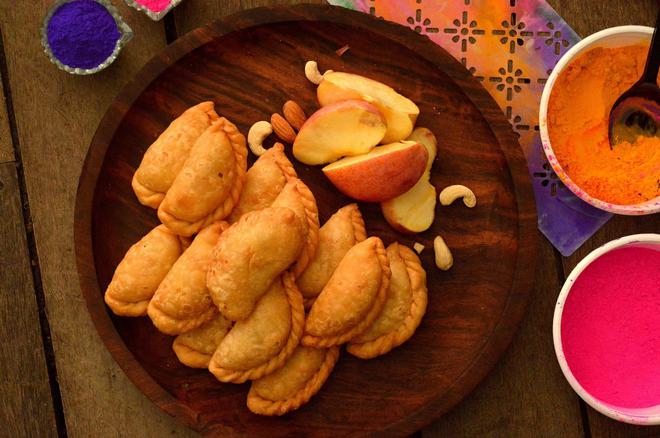
“Kanji vada is not made normally, it is made on special days like Deepavali. Everything is prepared without onion or garlic,” Vandana adds. The evening puja is the highlight of the celebration, a part of the food made at home is offered to Goddess Lakshmi as prasad. Dinner, traditionally, is puri with a vegetable dish but only after prayers are offered to the goddess at home. “Simha lagna is an auspicious time, which falls late in the night or in the early hours of the day. Some people wait for it, to offer prayers and only then eat. Back in the day, women used to fast on the day of Deepavali. Not everyone does it now, though!”
Oil bath, prayers and godda phovu
For the Gowda Saraswat community, Deepavali celebrations means no lentils, onions and garlic in their food. “Our day begins with a visit to the temple after an oil bath. The first thing eaten on the day is godda phovu, made from rice flakes, jaggery and coconut. It resembles avil vilayichathu that is made in Kerala with the same ingredients,” says Srilakshmi Ashwin of Mattancherry. During the month of Kartik in the Indian calendar, which is when Deepavali falls, pulses are not consumed, hence sweets such as jamboool, godsani ronti, and saatta are made of maida and semolina. “That is all changing...now it is all about motichoor ladoo and kaju katli,” she rues.
Since foods have to be lentil-free, thakka ambat or kuvlya ambat (made from ash gourd, purple yam, taro, potato cooked in coconut paste and curd) and pulchikery [a version of pulissery] made with Chinese potato in a coconut paste and curd are had with rice. “Making murukku at home was a big deal back in the day when everything was made at home. But now things have changed since sweets and savouries can all be bought,” she adds.







